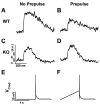Na/Ca exchange and contraction of the heart
- PMID: 23770352
- PMCID: PMC3730535
- DOI: 10.1016/j.yjmcc.2013.06.001
Na/Ca exchange and contraction of the heart
Abstract
Sodium-calcium exchange (NCX) is the major calcium (Ca) efflux mechanism of ventricular cardiomyocytes. Consequently the exchanger plays a critical role in the regulation of cellular Ca content and hence contractility. Reductions in Ca efflux by the exchanger, such as those produced by elevated intracellular sodium (Na) in response to cardiac glycosides, raise sarcoplasmic reticulum (SR) Ca stores. The result is an increased Ca transient and cardiac contractility. Enhanced Ca efflux activity by the exchanger, for example during heart failure, may reduce diadic cleft Ca and excitation-contraction (EC) coupling gain. This aggravates the impaired contractility associated with SR Ca ATPase dysfunction and reduced SR Ca load in failing heart muscle. Recent data from our laboratories indicate that NCX can also impact the efficiency of EC coupling and contractility independent of SR Ca load through diadic cleft priming with Ca during the upstroke of the action potential. This article is part of a Special Issue entitled "Na(+) Regulation in Cardiac Myocytes".
Keywords: AP; Ca; Calcium; EC; Excitation contraction coupling; Genetically modified mice; Heart contractility; Heart failure; KO; L-type Ca channels; LCCs; NCX; NCX knockout mouse; RyRs; SR; Sodium calcium exchanger; action potential; calcium; excitation–contraction coupling; ryanodine receptor; sarcoplasmic reticulum; sodium calcium exchanger.
Copyright © 2013 Elsevier Ltd. All rights reserved.
Figures




Similar articles
-
Cardiac sodium transport and excitation-contraction coupling.J Mol Cell Cardiol. 2013 Aug;61:11-9. doi: 10.1016/j.yjmcc.2013.06.003. Epub 2013 Jun 14. J Mol Cell Cardiol. 2013. PMID: 23774049 Review.
-
Cardiac sodium-calcium exchange and efficient excitation-contraction coupling: implications for heart disease.Adv Exp Med Biol. 2013;961:355-64. doi: 10.1007/978-1-4614-4756-6_30. Adv Exp Med Biol. 2013. PMID: 23224894 Free PMC article. Review.
-
Intracellular [Na(+)] modulates synergy between Na(+)/Ca (2+) exchanger and L-type Ca (2+) current in cardiac excitation-contraction coupling during action potentials.Basic Res Cardiol. 2011 Nov;106(6):967-77. doi: 10.1007/s00395-011-0202-z. Epub 2011 Jul 21. Basic Res Cardiol. 2011. PMID: 21779914
-
Calcium entry via Na/Ca exchange during the action potential directly contributes to contraction of failing human ventricular myocytes.Cardiovasc Res. 2003 Mar 15;57(4):974-85. doi: 10.1016/s0008-6363(02)00732-0. Cardiovasc Res. 2003. PMID: 12650875
-
Activation of reverse Na+-Ca2+ exchanger by skeletal Na+ channel isoform increases excitation-contraction coupling efficiency in rabbit cardiomyocytes.Am J Physiol Heart Circ Physiol. 2021 Feb 1;320(2):H593-H603. doi: 10.1152/ajpheart.00545.2020. Epub 2020 Dec 4. Am J Physiol Heart Circ Physiol. 2021. PMID: 33275521
Cited by
-
Assessment of PEEP-Ventilation and the Time Point of Parallel-Conductance Determination for Pressure-Volume Analysis Under β-Adrenergic Stimulation in Mice.Front Cardiovasc Med. 2019 Apr 10;6:36. doi: 10.3389/fcvm.2019.00036. eCollection 2019. Front Cardiovasc Med. 2019. PMID: 31111037 Free PMC article.
-
Structural mechanisms of the human cardiac sodium-calcium exchanger NCX1.Nat Commun. 2023 Oct 4;14(1):6181. doi: 10.1038/s41467-023-41885-4. Nat Commun. 2023. PMID: 37794011 Free PMC article.
-
Palmitoylation: A Fatty Regulator of Myocardial Electrophysiology.Front Physiol. 2020 Feb 19;11:108. doi: 10.3389/fphys.2020.00108. eCollection 2020. Front Physiol. 2020. PMID: 32140110 Free PMC article. Review.
-
Stress-Induced Proteasome Sub-Cellular Translocation in Cardiomyocytes Causes Altered Intracellular Calcium Handling and Arrhythmias.Int J Mol Sci. 2024 Apr 30;25(9):4932. doi: 10.3390/ijms25094932. Int J Mol Sci. 2024. PMID: 38732146 Free PMC article.
-
Gene Expressions Underlying Mishandled Calcium Clearance and Elevated Generation of Reactive Oxygen Species in the Coronary Artery Smooth Muscle Cells of Chronic Heart Failure Rats.Chin Med J (Engl). 2017 Feb 20;130(4):460-469. doi: 10.4103/0366-6999.199825. Chin Med J (Engl). 2017. PMID: 28218221 Free PMC article.
References
-
- Liao J, Li H, Zeng W, Sauer DB, Belmares R, Jiang Y. Structural insight into the ion-exchange mechanism of the sodium/calcium exchanger. Science. 2012;335:686–90. - PubMed
Publication types
MeSH terms
Substances
Grants and funding
LinkOut - more resources
Full Text Sources
Other Literature Sources
Research Materials

